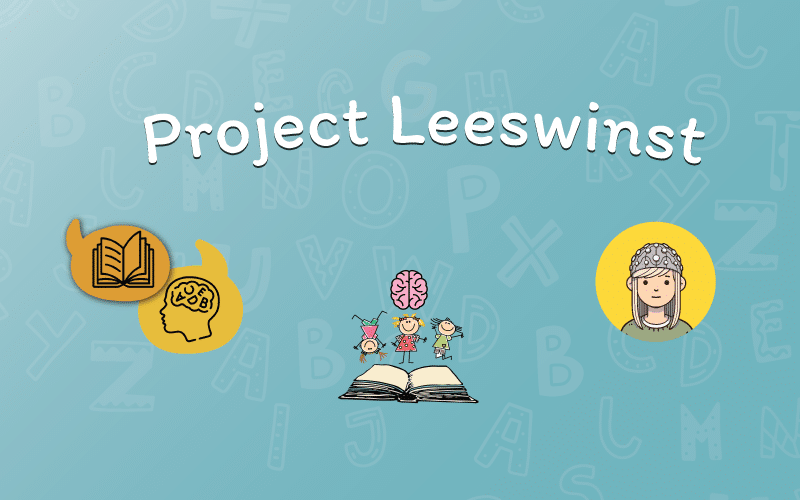First results Project Leeswinst
In Project Leeswinst, we aim to improve early detection of reading problems by developing a learning task where children learn to pair new letter-like symbols to speech sounds. We investigate how children learn these new letters and how their brain activity changes during this learning. With this knowledge, we will develop a digital learning test that predicts who will learn to read fluently and who will need extra support to prevent reading problems.
We are very happy that 67 children already participated as junior researchers in our study and that other children will still join this summer. A sneak peek of our first results shows that children indeed show large differences in learning the new letters. Interestingly, children with and without a family member with dyslexia did not differ in letter learning. We do see that children with a family member with dyslexia tend to score slightly lower when asked to recognize which words start or end with the same sound (for example: boom | doos – raam – tak – wieg).
How did children’s brain activity change while they were learning the new letters? Faster learners show greater activity changes in brain regions that are important for reading development. For example, in audiovisual areas and in the frontal cortex, which is involved in attention skills.
The first children have now come back to visit our labs in Maastricht, Amsterdam and Amersfoort for the follow-up (level 2). We are excited to discover what the children have learned this year and whether our letter learning task is indeed a good predictor of reading problems. This summer, we will also start an fMRI study in Maastricht to better understand how the brain of 8–12-year-old children with/without dyslexia changes during letter learning.
We thank all participating families and schools for their support and look forward to sharing more results as the project continues!
Interested in participating? Go to our get involved page!
